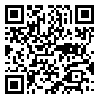Volume 12, Issue 47 (12-2018)
etiadpajohi 2018, 12(47): 193-212 |
Back to browse issues page
Islamic Azad University, Karaj Branch
Abstract: (3913 Views)
Objective: The aim of this study was to predict addiction potential based on the quality of working life and academic burnout among university students. Method: All the employed students both in Azad and State universities of Tehran in the academic year 2017-18constituted the statistical population of this study. Using Cochran formula, 384 people were required to be selected as the sample units. The scales pertaining to Addiction Potential, Quality of Working Life, and Academic Burn-out were employed for data collection. Results: The results showed that addiction potential had a negative relationship with the quality of working life but had a positive relationship with academic burn-out. The results also indicated that active addiction potential is the best predictor of students' quality of life and academic burn-out. However, passive addition potential did not contribute to the prediction of students' quality of working life dimensions. Conclusion: The dimensions of students' quality of working life and academic burn-out have a decisive role in explaining the components of their addiction potential.
Type of Study: Research |
Subject:
Special
Received: 2018/08/5 | Accepted: 2018/11/9 | Published: 2018/12/3
Received: 2018/08/5 | Accepted: 2018/11/9 | Published: 2018/12/3
| Rights and permissions | |
 |
This work is licensed under a Creative Commons Attribution-NonCommercial 4.0 International License. |



